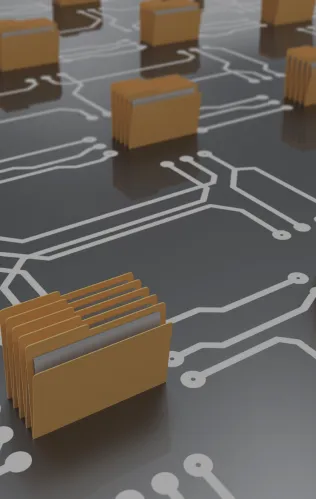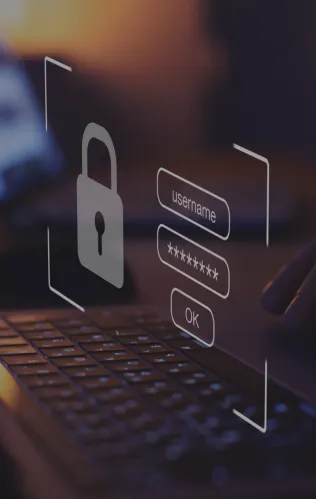From cumbersome paper trails to complicated bureaucratic processes, traditional academic credential verification is plagued with inefficiencies. As a result, the creation and distribution of fake academic records have proliferated. In 2023, UNESCO reports estimated that 4.7 billion people hold or have held fake diplomas. This sheds light on the alarming prevalence of fraudulent credentials and the urgent need for a more secure and reliable verification system. One way to combat this pervasive issue is through the integration of blockchain in School Management Systems. Originally renowned for its association with cryptocurrencies, blockchain has evolved into a robust solution in the verification processes in the educational sector. The combination of blockchain technology and School Management Systems provides a comprehensive solution to not only mitigate the risk of fraudulent credentials but also enhance the overall efficiency of academic verification.
Understanding Academic Credentials on the Blockchain
Traditionally, student credentials were managed through centralized systems, often susceptible to fraud or manipulation. However, the integration of blockchain in School Management Systems provides a decentralized and tamper-resistant ledger, ensuring the authenticity and security of academic records. The blockchain stores each academic achievement as a unique and unalterable block. This permanence ensures that the academic records are resistant to tampering, fraud, or unauthorized alterations. Institutions, employers, and other stakeholders can confidently verify the credentials without concerns about the integrity of the information. Additionally, the decentralized nature of blockchain means that there is no single point of failure, making it a robust and reliable solution for storing sensitive academic information. The use of blockchain in academic credentials streamlines verification processes and establishes a secure ecosystem for managing educational achievements.

Key Components of a Blockchain-Based School Management Systems
One of the major elements of integrating blockchain into School Management systems is automating the verification processes through Smart Contracts. These self-executing contracts are encoded with predefined rules, enabling the automatic validation of academic credentials. Instead of relying on time-consuming and error-prone manual verification, Smart Contracts execute predefined conditions. On the other hand, the decentralized ledger ensures data integrity and security. Traditional centralized systems are prone to vulnerabilities and single points of failure, exposing student data to potential risks. In contrast, a decentralized ledger disperses information across a network of nodes, creating a tamper-resistant environment. Another essential element is the consensus mechanism, which is the building block for trust in the network. Through consensus, stakeholders collectively validate and agree upon the accuracy of transactions and academic records. This collaborative validation process ensures that the information stored in the blockchain remains reliable. Smart Contracts, Decentralized Ledger, and Consensus Mechanisms form a cohesive framework that drives the transformation of verification processes in academic institutions.
Steps for Implementing Blockchain in School Management Systems
1. Define Clear Objectives and Use Cases:
Begin by identifying specific objectives for implementing blockchain in your school management systems. Whether the goal is to enhance data security, streamline verification processes, or improve overall efficiency, a clear understanding of the intended outcomes is crucial. Moreover, defining specific use cases for blockchain within the academic environment helps tailor the technology to address the institution’s unique needs.
2. Select the Right Blockchain Development Partner:
Collaboration with experienced and reputable blockchain development companies is paramount. Carefully evaluate potential partners based on their expertise, track record, and understanding of the education sector. A collaborative effort with a skilled development team ensures that the implemented blockchain solution aligns seamlessly with the institution’s goals.
3. Invest in Stakeholder Training Programs:
A comprehensive training and education initiative for administrators, educators, and support staff involved in the implementation process is essential. Training programs should cover not only the technical aspects of blockchain but also the practical applications within the academic context. This investment ensures a smooth transition, minimizes resistance, and maximizes the benefits of the technology.
4. Develop a Detailed Implementation Roadmap:
The roadmap should outline specific milestones, timelines, and tasks involved in the implementation process. A detailed plan facilitates effective collaboration with blockchain development partners, establishes realistic expectations, and ensures the integration of technology without disrupting regular academic operations.
5. Establish Governance Frameworks and Compliance:
Define clear roles, responsibilities, and decision-making processes related to the blockchain implementation. Ensure compliance with data protection laws and other relevant regulations. A robust governance structure contributes to a smooth and transparent implementation, preventing potential conflicts and guaranteeing the technology aligns with institutional policies.

Edublock and Classter Enhances Verification
Edublock emerges as a pioneering solution designed to revolutionize the landscape of the academic document verification process. The benefits of integrating Edublock into Classter’s School Management Systems allow institutions to easily tap into the wealth of information and accounts stored within Classter through an API. This enables the automation and distribution of personalized credentials and certifications directly from Classter to Edublock. Academic records, such as grades and completion certificates, can be automatically disseminated to students without the need for manual intervention. Moreover, the integration ensures the automatic distribution of personalized credentials after the completion of specific tasks, such as importing semester lesson grades. This not only enhances the speed of document distribution but also improves the accuracy of record-keeping. Edublock, when integrated with Classter, establishes a unified and secure environment for managing and distributing educational records. It offers a transformative solution that addresses the challenges posed by fraudulent certifications, diplomas, and transcripts in the contemporary labor market.
Future Trends in Blockchain-Based Academic Credential Verification
As technology matures within the education sector, there is an anticipated surge in innovative applications and advancements. The blockchain’s role is set to extend beyond mere record-keeping and delve into security, data interoperability, and increased automation. Potential advancements include the integration of artificial intelligence and machine learning algorithms to further streamline verification processes. Predictions for the widespread adoption of blockchain in academic credential verification indicate a trajectory toward becoming a standard practice. The seamless integration of blockchain into school management systems is likely to reduce reliance on traditional verification methods. This shift is driven by the growing recognition of blockchain’s potential to establish a standardized and universally accepted credential verification system.
FAQ’s
Blockchain technology ensures the security and authenticity of academic records by providing a decentralized and tamper-resistant ledger for storing credentials.
Integrating blockchain into School Management Systems streamlines verification processes, mitigates the risk of fraudulent credentials, and improves overall efficiency.
Edublock stands as innovative platform that offers a robust framework for securely managing academic credentials, streamlining verification processes, and enhancing overall efficiency within School Management Systems.






